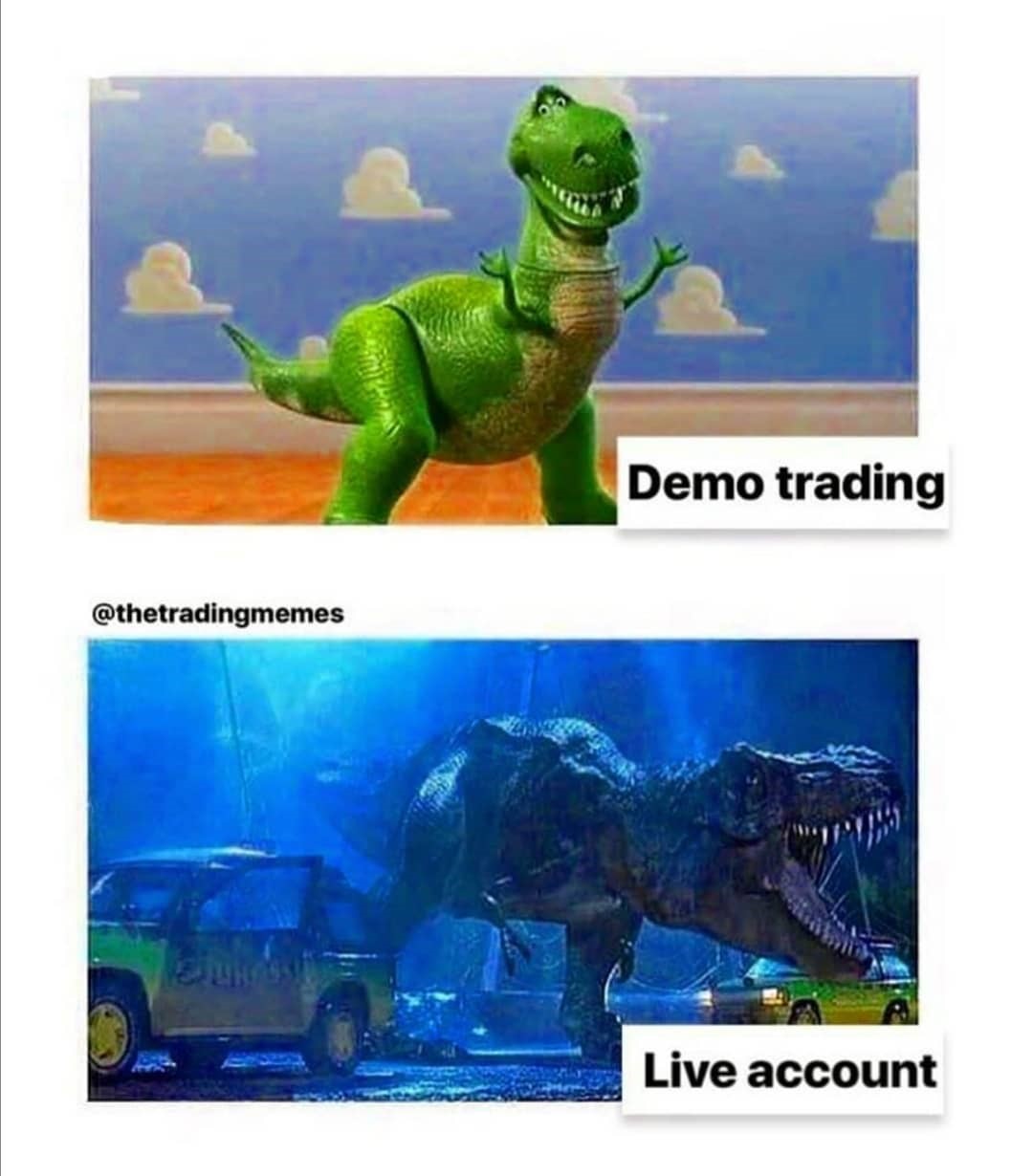Making the switch from day trading on a demo account to live account is a big moment for every trader. This is an outline on how to go about it to minimise some common pitfalls.
Just to clarify a demo trading account is where people new to day trading can practise with live market prices but in a simulated environment with pretend money. Registering for a demo account is free and easy and gives the new trader instant access to all the available financial markets but without the risk.
A live trading account involves depositing your own money to trade with and put at risk, where all profits and losses are for real.
What is the difference between a demo and live account?
Besides the major distinction of fake and real funds in the account, there are some other differences that a demo trader should know and prepare for before starting live day trading.

Execution. In a live account, trade orders cannot always be executed at the exact market price and there can be slippage. Slippage is when the market price moves in the time between the order being placed and being executed, resulting in a worse entry point than planned. This can work out favourably too, as limit orders can get ‘price improvement’ in fast moving markets.
Fees & commissions. Typically, the fixed commissions in a demo account will work just the same as in the live account. Default Bid/Ask spreads will also be the same but in a live account, spreads can widen if there is high volatility in markets.
Trading Psychology. This is just the difference in the way we act as human beings between when there is risk and no risk. When you you are at real risk off losing your money, you will tend to make different decisions than if the loss doesn’t practically matter for your personal wealth and success.
How to open a live trading account
You can skip this section if your live account is already open.
The practical first step is to fill out the online application form for a live account. Filling in the form will take a couple of minutes. Make note that the form will be longer with a regulated broker because it is part of the regulatory requirement to gather certain information on customers. These are known as ‘KYC Rules’ – know your customer. You may also be required to snap a picture of an ID or passport as well as send a proof of address live a utility bill. With e-statements now available online this shouldn’t be very problematic.
Depending on the trading platform you use, you should be able to instantly switch back and forth between your demo and live account with the same login.

Opening a live account with FlowBank gives you the security of a Swiss bank with access to 50,000 financial products using latest technology.
FAQ: Wait to be profitable on demo?
Before we go any further, it’s worth addressing this very frequently asked question.
Should I wait to be profitable on the demo account before moving to a live account?”
The answer is an unequivocal no. The differences already noted between a demo account and live account – especially the psychological element - make this a futile exercise. It is better to cultivate your trading strategy in a real market environment with small amounts of real money at risk.
To learn more about how to best use a demo account, read our blog
How to Practise paper trading on a demo account.
The 5 steps to take before moving to a live account
So with your newfound understanding of the differences between a live account and demo account – and with your live account open and ready to trade – here are some final things to get right before being a real day trader.
1 Keep expectations in check 🤑
It’s possible that you just made a small fortune in fake money and you’re ready to do just the same with real money. Be realistic. Learning to trade is a marathon not a sprint and there will be ups and downs and a lot of perseverance needed.
2 Learn new market conditions 🌄🏔️
One or two months on a demo account can’t demonstrate every type of market environment. Fortunately, most online platforms have daily price data going back years and intraday data going back several months. It is a simple exercise to go through past price charts and see how your trading style would have fared in the past.
3 Tighten up risk management ☘️
With fake money you may have been quite casual about letting losses run until the trade turned around or perhaps you tended to quickly grab the profits while they were on offer. In a live account, your first mission is the preservation of capital. Remember Warren Buffett’s first rule of investing “Don’t lose money.”
4 How much money to start trading? 💰
Hope for the best and plan for the worst. Think about the worst-case scenario. Would you be fine if all the funds you deposit disappeared in trading losses? If no, you need to reconsider how much money you are comfortable putting at risk. If yes, you are ready to go. Deposit enough to keep you interested but not enough to get worried!
5 Carefully plan your first trade 📚
Take your time on your first trade especially. Wait for a good opportunity. Write down some rules for how your trade will be executed, including which order types will be used, where you will take profit if it goes well, or where you will cut losses if it goes wrong.
Despite all the best efforts of this guide to make the switch from live to demo, there is only so much that can be learned through reading – the rest much be learned by doing.
Good luck!





